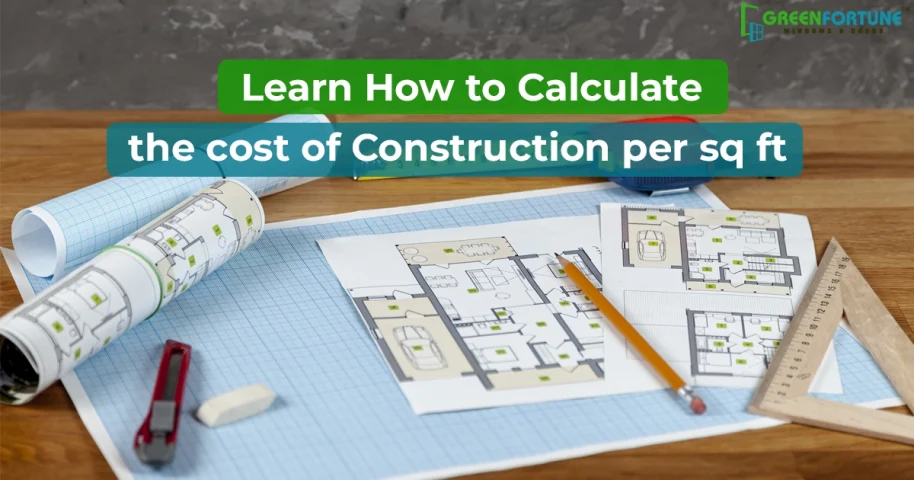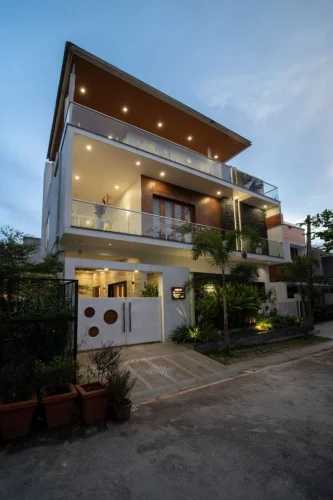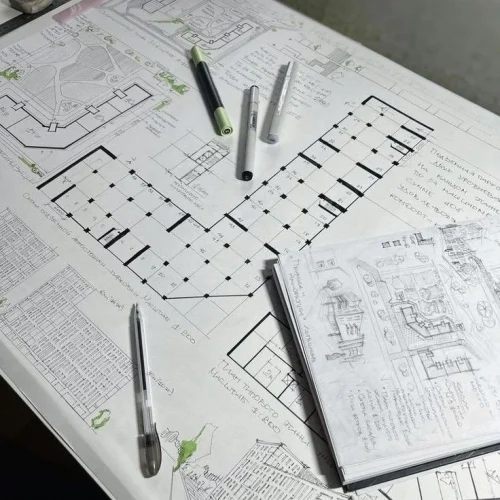
10 Modern Wall Texture Designs to Reshape Your Walls
March 27, 2025
Plots Construction: A Complete Guide To Buying And Preparing Land For Building
March 28, 2025Constructing a house in India is like a big festival for Indian Families. But it also comes with a complex web of costs and square foot cost. Whether it's a cozy apartment or a luxurious bungalow, understanding the construction cost is crucial before you even think about laying the first brick.
But how do you navigate the cost of materials, labor, and fluctuating prices? No need to worry we have got you covered!
Why Square Foot Cost Matters?
Source: Pinterest
The square foot cost provides a simplified way to estimate the overall expenses. It helps with quick comparisons and the relative cost of the construction of the house.
But it is very important to remember that the estimated cost construction per square foot, and actual costs can differ significantly. By understanding the square foot cost, you can make an informed decision about funds before starting the construction of your dream house.
Determining Factors of Square Foot Cost:
Source: Pinterest
Several factors determine the square foot cost in India. Below we have listed a few for your better understanding:
- Location: The Metropolitan areas have higher labor and material costs compared to smaller cities or rural areas. This directly impacts the final building cost building cost per square foot.
- Quality of the Material: If you choose a premium or quality material the square foot cost will substantially increase. The higher the quality of the material the higher the construction cost per square foot.
- Design: If you want intricate design while building your house then it will eventually increase the house construction cost per square foot. So, if you want a sturdy and compact house and have a tight budget refrain from Intricate design.
- Labor Rates: Labor costs vary depending on the skill level of the workers and the region, affecting the overall square foot cost.
- Finishing and Fixtures: The type and quality of finishes, such as flooring, painting, and fixtures, significantly affect the final square foot cost.
Also Read: What are the stages of house construction?
How to Calculate Square Foot Cost?
Here are the few steps that will help you in calculating the builders cost per square foot:
- Determine the Built-Up Area: Measure the total area of your planned construction in square feet.
- Estimate Material Costs: Compile a detailed list of materials and obtain current prices from local suppliers.
- Calculate Labor Costs: Get quotes from contractors for labor charges.
- Add Finishing and Fixture Costs: Include expenses for painting, plumbing, electrical work, and other finishing touches.
- Factor in Miscellaneous Costs: Account for permits, approvals, architectural fees, and contingencies.
- Divide by the Built-Up Area: Divide the total estimated cost by the built-up area to get the square foot cost.
Also Read: Complete Guide to AAC Blocks in Construction
Consideration on how to calculate construction cost per square feet:
To ensure a more accurate budget for your dream home, it's crucial to proactively manage costs. Begin by obtaining multiple quotes from various contractors and suppliers, enabling you to negotiate prices and compare rates effectively. Prioritize the use of quality materials, as this investment will significantly enhance the durability and longevity of your construction.
Additionally, always maintain a buffer for unexpected expenses, as unforeseen circumstances are common in building projects. By diligently following these steps and understanding the factors that influence the square foot cost, you can create a realistic and manageable budget, bringing your dream home closer to reality.
Conclusion
The complexities of construction costs in India, particularly the crucial metric of square foot cost, requires a blend of careful planning, thorough research, and a realistic approach. While the square foot cost provides a valuable starting point for budgeting, it's essential to remember that it's an estimate, subject to fluctuations based on various factors.
From the location and materials to the design and labor, each element contributes to the final tally. By understanding these influencing factors and employing the calculation methods outlined in this blog, you can empower yourself to make informed decisions, ensuring your dream home remains within reach.
Also Read: How uPVC Frame Doors Are Outshining Wooden Frames in 2025
Green Fortune Doors and Windows
Green Fortune Doors and Windows embodies a commitment to sustainable living without compromising on style and functionality. Our product line seamlessly integrates energy-efficient designs with high-quality materials, that offers the homeowners a way to reduce their carbon footprint while enhancing their living spaces.
From thermally insulated window frames to durable, eco-friendly door options, Green Fortune belives on minimizing energy loss and maximizing natural light. By choosing Green Fortune, you're not just investing in aesthetically pleasing and long-lasting fixtures, you're contributing to a greener future.
Frequently Asked Questions (FAQs):
Q1: What is the average construction cost estimate per square foot in India?
A: The average square foot cost can range from ₹1,500 to ₹4,000 or more, depending on location, materials, and design. Luxury projects will exceed this range.
Q2: How does location affect the house construction cost per square foot?
A: Metropolitan cities generally have higher labor and material costs that is why the the square foot cost is much higher compared to rural areas or semi-urban areas in India.
Q3: Does the quality of materials significantly impact the square foot cost?
A: Yes, the quality of materials plays a crucial role. Premium materials will increase the overall square foot cost but often provide better durability and aesthetics.
Q4: What are some hidden costs that can affect the square foot cost?
A: Hidden costs can include architectural fees, structural engineering fees, permits, approvals, unforeseen site conditions, and fluctuations in material prices. It is always wise to add a 10-15% buffer for these costs.









